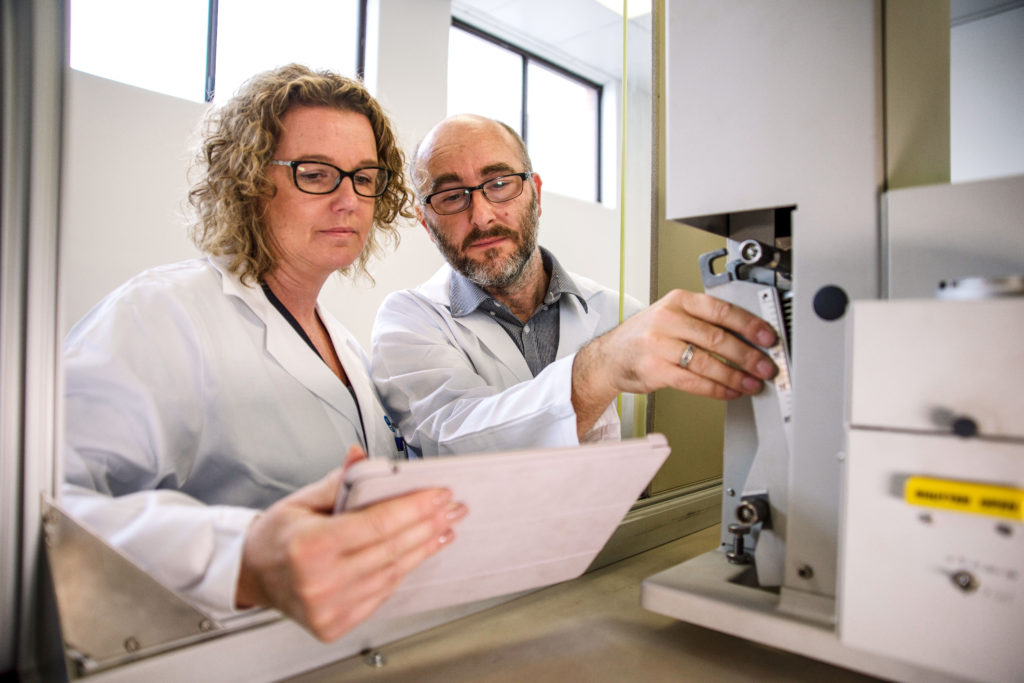XRD offers an incredibly useful tool in determining – phase composition across a whole range of applications. Our XRD capabilities are driven by a Philips X’pert x-ray diffractometer coupled with the Bruker EVA 3.1 software and ICDD PDF4 database for phase identification. We offer qualitative, semi-quantitative and fully quantitative phase analysis to suit your specific requirements. Our fully quantitative analysis includes Rietveld refinement with an internal standard to quantify amorphous content. Some examples of our previous work include:
* Standard determination of the phase composition of industrial ores and clays;
* Examining very small amounts of corrosion product using zero-background holders;
* Establishing crystal structures of chemicals in patent claims; and
* Alpha-quartz determination on personal and environmental air filters.
All our XRD analysis comes with comprehensive reports that can be tailored to your needs.
X-ray diffraction (XRD) is a non-destructive, versatile technique which can be used to determine the crystalline structure of a solid and quantitatively determine the phases present. It is otherwise difficult to determine the nature of the crystallographic structure within a solid.
The X-ray diffractometer is comprised of an X-ray source, which is focussed on the sample at a particular angle of incidence through horizontal and vertical divergence slits which allow manipulation of the incident angle. The intensity and deflection angle of the deflected beam is then measured to produce a diffractogram which can then be interpreted visually or with the aid of a computer analysis package to determine the crystal structure and chemical compounds present in the solid.
The phases in the XRD pattern are identified by matching the peak positions and relative peak intensities with those of known crystal structures. Although this was traditionally done manually, there are now several software packages available to help with the Search/Match process. The assigned mineralogy for each phase is chosen based upon known properties of the sample (elemental composition, solubility, origin) and how well the pattern matches the literature pattern. There are several crystallographic databases which contain large numbers of reference patterns for comparison.
X-ray diffraction is often used to semi-quantitatively determine the weight fraction of constituents. By comparing the integrated intensities of the diffraction peaks from each of the known phases, their w/w percent can be approximated. In addition, complex mixtures containing more than two phases can be quantified. Even if one phase is amorphous, diffraction can still yield the relative amount of each phase. In some situations it is necessary to prepare calibration standards to obtain the highest accuracy. If peak overlaps occur, some deconvolution may be required in post processing.







